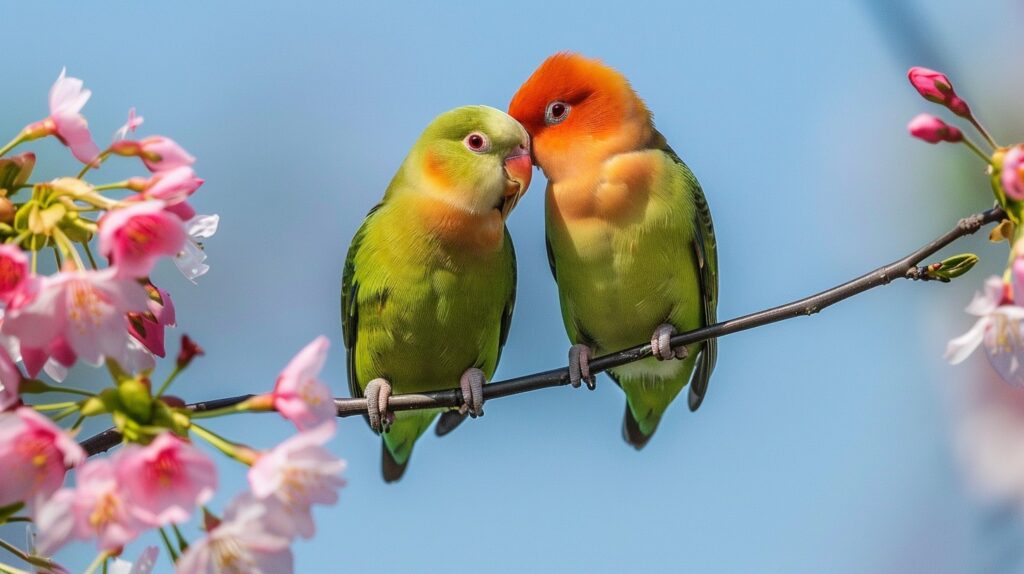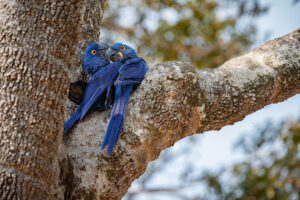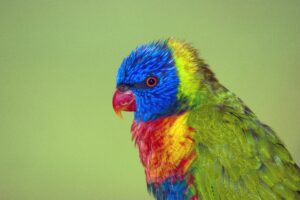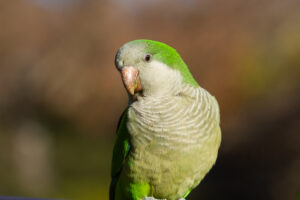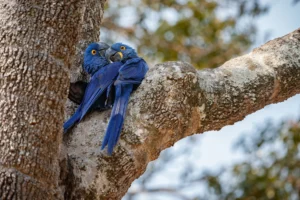Introduction
The peach lovebird, scientifically known as Agapornis roseicollis, is one of the most vibrant and charming companion birds available today. These small, colorful parrots have captured the hearts of bird enthusiasts across the United States with their playful personalities and striking appearance. If you’ve recently welcomed a peach lovebird into your home or are considering adding one to your family, understanding how to properly care for these delightful creatures is essential for ensuring they live a long, healthy, and happy life.
Native to southwestern Africa, the peach lovebird has become a popular pet choice due to its manageable size, beautiful coloration, and affectionate nature. The name “lovebird” comes from the strong pair bonds these birds form in the wild, often sitting closely together and grooming one another – a behavior that has earned them their romantic moniker. The peach-faced lovebird, in particular, stands out with its distinctive rosy-peach facial coloring that gives this variety its name.
In this comprehensive guide, we’ll explore five powerful secrets to keeping your peach lovebird in optimal health and happiness. From diet and habitat to social needs and health considerations, we’ll cover everything you need to know about peach lovebird care. Whether you’re a first-time bird owner or a seasoned avian enthusiast, these insights will help you provide the best possible environment for your feathered friend.
The average peach lovebird lifespan ranges from 15-20 years when properly cared for, meaning these birds are a significant long-term commitment. With the right knowledge and preparation, you can ensure your peach lovebird thrives throughout its life. Let’s dive into the essential aspects of peach lovebird care that will set you and your avian companion up for years of joyful companionship.
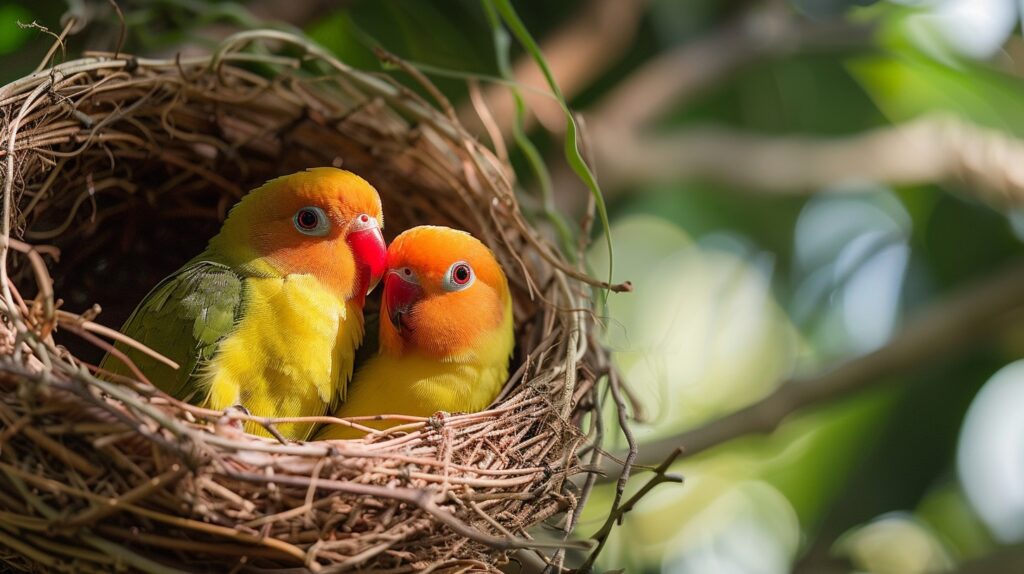
Secret #1: Perfect Peach Lovebird Diet – The Foundation of Health
The cornerstone of a healthy peach lovebird is a well-balanced diet. Proper nutrition directly impacts your peach lovebird’s lifespan, energy levels, plumage condition, and overall vitality. Unlike some pet birds that can survive on a simple seed diet, peach lovebirds require diverse nutrition to thrive.
Core Components of an Ideal Peach Lovebird Diet
1. High-Quality Pellets (50-60% of diet)
The foundation of your peach lovebird’s diet should be high-quality formulated pellets specifically designed for small parrots or lovebirds. These pellets provide consistent nutrition and help prevent the selective eating habits that can occur with seed-only diets. Look for pellets without artificial colors, preservatives, or added sugars.
Premium brands like Harrison’s Bird Foods, Roudybush, and TOPS offer excellent nutritional profiles for your peach lovebird. These specialized formulations contain the precise balance of proteins, carbohydrates, fats, vitamins, and minerals that peach lovebirds need.
2. Fresh Fruits and Vegetables (20-30% of diet)
Peach lovebirds benefit enormously from fresh produce that provides essential vitamins, minerals, and antioxidants. Introduce a variety of:
- Vegetables: Dark leafy greens (kale, spinach, Swiss chard), carrots, sweet potatoes, bell peppers, broccoli, and zucchini
- Fruits: Berries, apples (no seeds), mangoes, papayas, and melons
Always wash produce thoroughly and cut into manageable pieces for your peach lovebird. Remove any uneaten fresh food after a few hours to prevent bacterial growth.
3. Limited Seeds and Nuts (10-15% of diet)
While seeds shouldn’t be the primary component of your peach lovebird’s diet, they do have their place. Small amounts of high-quality seed mixes can provide healthy fats and serve as excellent training rewards. Suitable options include:
- Millet
- Canary seed
- Safflower seeds
- Small sunflower seeds
- Unsalted nuts (in small amounts, especially for breeding birds)
Remember that seed addiction is common in peach lovebirds. If your bird prefers seeds over healthier options, gradually transition them to a more balanced diet by mixing decreasing amounts of seeds with their pellets.
4. Sprouted Seeds (5-10% of diet)
Sprouted seeds offer superior nutrition compared to dry seeds. When seeds germinate, their nutritional profile changes dramatically, increasing vitamin content and improving digestibility. Many peach lovebird enthusiasts sprout small quantities of seeds for their birds as a nutritious treat.
Hydration – Critical for Your Peach Lovebird
Fresh, clean water is essential for your peach lovebird’s health. Change the water at least once daily, and clean water containers thoroughly to prevent bacterial growth. Some peach lovebird owners use water bottles similar to those designed for hamsters to keep water cleaner longer, though bowls are also suitable if maintained properly.
Foods to Avoid
Several common foods are toxic to peach lovebirds and should never be offered:
- Avocado (contains persin, which is fatal to birds)
- Chocolate
- Caffeine
- Alcohol
- Onions and garlic
- High-salt foods
- Foods containing xylitol
- Apple seeds, cherry pits, and other fruit seeds/pits containing cyanide compounds
Implementing a diverse, nutritionally complete diet is perhaps the single most important factor in extending your peach lovebird’s lifespan and ensuring vibrant health. Monitor your bird’s weight and adjust portions accordingly, as obesity can significantly shorten a peach lovebird’s life.
Secret #2: Optimal Peach Lovebird Cage Setup and Habitat
Creating the perfect living environment for your peach lovebird is crucial for their physical and psychological well-being. In the wild, peach-faced lovebirds have vast spaces to explore, so replicating elements of their natural habitat within the constraints of captivity helps satisfy their innate behaviors and keeps them stimulated.
Cage Selection – Size and Quality Matter
The minimum cage size for a single peach lovebird should be 18″ x 18″ x 18″, but larger is always better. For a pair of peach lovebirds, look for cages at least 24″ x 24″ x 24″. When selecting a cage, consider these essential features:
- Bar spacing: 1/2 inch maximum to prevent escapes or injuries
- Material: Stainless steel or powder-coated metal (avoid cages with zinc or lead components, which can cause poisoning)
- Door security: Lovebirds are clever and may learn to open simple latches
- Shape: Horizontal space is more important than vertical height, as peach lovebirds fly horizontally
- Access points: Multiple doors for easy cleaning and interaction
Most importantly, bigger is always better when it comes to peach lovebird cages. These active birds need space to hop, fly, climb, and play. A flight cage that allows for short flights is ideal for maintaining proper muscle tone and preventing obesity.
Essential Cage Furnishings
1. Perches
Provide multiple perches of varying diameters (1/2″ to 1″) and materials to promote foot health and prevent pressure sores. Excellent options include:
- Natural, untreated wood branches (apple, willow, or manzanita)
- Rope perches (monitor for fraying)
- Concrete perches (one only, to help maintain nail length)
- Avoid dowel rods or all-plastic perches as the sole option
Position perches at different heights and locations to encourage movement, but keep food and water areas clear of droppings by not placing perches directly above them.
2. Toys – Mental Stimulation Is Critical
The peach lovebird is highly intelligent and requires mental stimulation to prevent boredom and destructive behaviors. Rotate toys regularly to maintain interest. Appropriate toy types include:
- Foraging toys: Hide treats to encourage natural foraging behavior
- Chewing toys: Wood, palm leaf, or seagrass items satisfy the natural urge to chew
- Puzzle toys: Challenge your peach lovebird’s problem-solving abilities
- Swings and ladders: Promote physical activity
- Shredding materials: Paper or cardboard for nesting behavior (monitor in females to prevent excessive hormonal responses)
Avoid toys with small, easily swallowed parts, zinc components, or loose strings that could entangle your bird.
3. Food and Water Stations
Use heavy ceramic dishes to prevent tipping, and position them where they won’t be soiled by droppings. Stainless steel is another excellent option for food and water containers as it’s easy to sanitize. Provide separate dishes for:
- Pellets
- Fresh foods
- Seeds/treats
- Fresh water
Cage Placement – Location Matters
Where you place your peach lovebird’s cage significantly impacts their sense of security and overall well-being:
- Position the cage against a wall (rather than in the middle of a room) to provide a sense of security
- Elevate the cage to at least waist height
- Avoid placing near drafty windows, direct sunlight, or cooking areas
- Keep away from air fresheners, scented candles, and non-stick cookware, which release fumes toxic to birds
- Place in a room where the family spends time, as peach lovebirds are social and benefit from interaction
Temperature and Lighting Requirements
Peach lovebirds thrive in environments between 65-80°F (18-27°C). Avoid extreme temperature fluctuations and ensure adequate ventilation without drafts. In terms of lighting, peach lovebirds benefit from:
- Natural, indirect sunlight (through windows, but avoid overheating)
- Full-spectrum lighting if natural light is limited (10-12 hours daily)
- Consistent day/night cycles with a dark, quiet sleeping period
Maintaining a Clean Habitat
Regular cleaning is essential for your peach lovebird’s health:
- Daily: Change food and water, clean feeding dishes, and spot-clean obvious waste
- Weekly: Change cage liner, wipe down perches and toys, and disinfect food and water containers
- Monthly: Deep clean the entire cage, all accessories, and toys with bird-safe disinfectants
Creating an enriching environment through proper peach lovebird cage setup not only ensures physical health but also promotes natural behaviors and psychological well-being, contributing to a longer peach lovebird lifespan and a happier pet.
Secret #3: Understanding Peach Lovebird Behavior and Social Needs
Peach lovebirds are renowned for their complex social structures and behaviors. Understanding these behavioral patterns is crucial for forming a strong bond with your bird and ensuring their emotional well-being. The peach-faced lovebird, in particular, has several distinctive behavioral traits that set it apart from other companion birds.
Social Structure and Companionship
In the wild, peach lovebirds live in small flocks, forming strong pair bonds. This social nature translates to their behavior in captivity:
Single Bird Households: If you have only one peach lovebird, you become their flock. This means committing to significant daily interaction—at least 2-3 hours outside the cage. Single peach lovebirds require more human companionship to prevent loneliness and depression. Signs that your solo peach lovebird is bonding with you include:
- Preening your hair or clothing
- Making soft chirping sounds when you approach
- Seeking to be near you
- Displaying excitement when you enter the room
Multi-Bird Households: Keeping peach lovebirds in pairs or small groups can provide more natural socialization. However, this often results in birds that are less bonded to humans. If you choose this route:
- Introduce birds carefully and gradually
- Provide multiple feeding stations to prevent resource guarding
- Watch for signs of aggression, particularly during breeding season
- Understand that same-sex pairs can cohabitate happily, though male-male pairs sometimes show more aggression than female-female pairs
Communication and Vocalizations
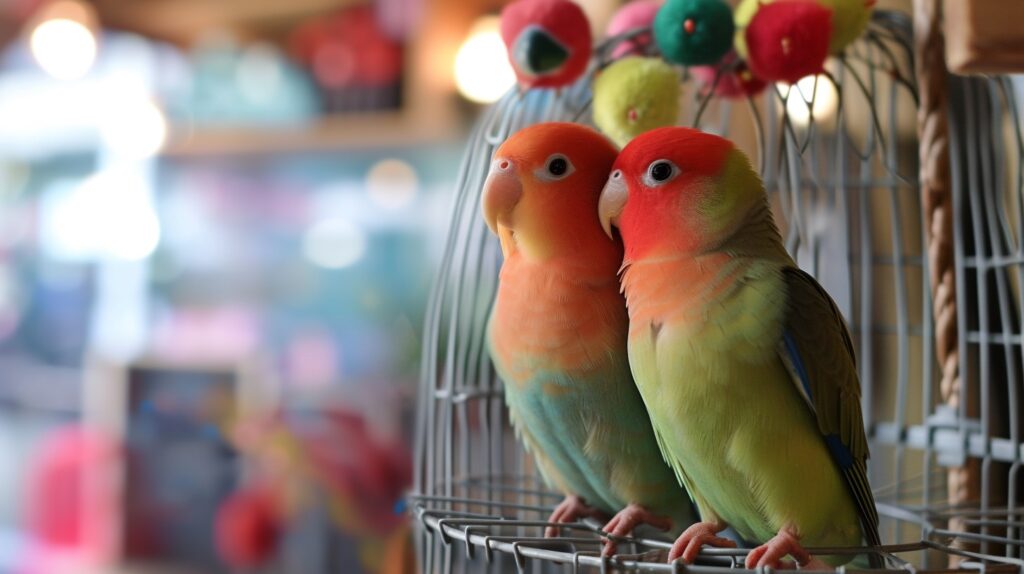
Peach lovebird sounds include various chirps, clicks, and calls that communicate different needs and emotions. Understanding these vocalizations helps you respond appropriately:
- Contact calls: Short, repeated chirps that maintain connection with the flock
- Contentment: Soft, gentle chirping or purring sounds when relaxed
- Alarm calls: Sharp, loud squawks warning of perceived danger
- Territorial calls: Aggressive chattering when defending space
- Courtship sounds: Soft warbling or singing, often accompanied by regurgitation movements
Unlike some parrots, peach lovebird talking abilities are limited. While occasional peach lovebirds might mimic simple words or sounds, most do not develop significant speaking abilities. Their communication is primarily through body language and their natural vocalizations.
Body Language – The Key to Understanding Your Peach Lovebird
Peach lovebirds communicate extensively through posture and movement:
- Fluffed feathers: When relaxed and content, a peach lovebird may appear slightly fluffed. However, excessive fluffing, particularly when combined with lethargy, can indicate illness.
- Head bobbing: Often associated with courtship or excitement
- Beak grinding: Usually occurs when content and ready to sleep
- Tail wagging: Can indicate excitement or agitation
- Wing stretching: Normal maintenance behavior, often seen after rest
- Regurgitation: When directed at you or another bird, this is a sign of affection
- Pinned pupils (rapidly dilating and contracting): Indicates excitement or sometimes aggression
- Raised crown feathers: Often signals alertness or mild alarm
Territorial Behavior
Peach lovebirds can be territorial, particularly during breeding season. This behavior may manifest as:
- Aggressive lunging or biting when hands enter “their” space
- Defending specific cage areas or toys
- Increased vocalization when “intruders” approach their territory
Consistent, respectful handling and maintaining boundaries helps manage territorial peach lovebird behavior.
Intelligence and Enrichment Needs
The peach-faced lovebird is remarkably intelligent, requiring regular mental stimulation:
- Foraging opportunities: Hide small portions of food around the cage or in foraging toys
- Training sessions: Short, positive reinforcement-based training builds bonds and mental engagement
- Novel experiences: Introducing new toys, perches, or safe environments prevents boredom
- Problem-solving: Puzzle toys that reward with treats encourage cognitive development
Breeding Behavior
Understanding peach lovebird breeding behavior is important even if you don’t intend to breed your birds:
- Females become particularly territorial during nesting season
- Nesting material may be tucked into feathers (especially tail feathers) for transport
- Hormonal behaviors increase with longer daylight hours and presence of nesting materials
- Without appropriate outlets, breeding behaviors can lead to aggression or egg-laying in females (which can cause health issues if chronic)
To discourage breeding behaviors:
- Maintain consistent 10-12 hour “day” periods
- Remove potential nesting materials
- Rearrange cage setup periodically
- Avoid petting on the back, which can be interpreted as mating behavior
By understanding and respecting natural peach lovebird behavior, you can create a relationship based on trust and mutual respect. This knowledge allows you to interpret your bird’s needs accurately and respond appropriately, leading to a happier, healthier pet.
Secret #4: Preventative Health Care for Your Peach Lovebird
Maintaining optimal health for your peach lovebird requires vigilance, preventative care, and quick response to potential issues. These small birds often hide illness until it’s advanced, making regular monitoring and preventative health measures essential for a long peach lovebird lifespan.
Finding an Avian Veterinarian
Before you even bring your peach lovebird home, locate an avian-certified veterinarian in your area. Regular birds vets may lack specialized knowledge about peach lovebird health issues. The Association of Avian Veterinarians (www.aav.org) maintains a directory of qualified professionals.
Schedule an initial exam within the first week of bringing your peach lovebird home, and plan for annual check-ups thereafter. These visits should include:
- Physical examination
- Weight check
- Fecal analysis
- Discussion of diet and behavior
- Beak and nail maintenance if needed
Daily Health Monitoring
Perform a quick visual health check of your peach lovebird daily, looking for:
- Droppings: Healthy droppings have firm, brown/green fecal portion, white urates, and clear, minimal urine
- Eyes: Clear, bright, and fully open without discharge
- Nares (nostrils): Clean without discharge or crusting
- Feathers: Smooth, clean, properly aligned without bald patches
- Posture: Alert, balanced, with weight distributed evenly on both feet
- Activity level: Consistent with normal patterns for your individual bird
- Appetite and water consumption: Regular and appropriate
Any significant changes warrant monitoring and potentially veterinary attention.
Common Peach Lovebird Health Issues
While proper care prevents many problems, be aware of these common peach lovebird health issues:
1. Respiratory Infections
- Symptoms: Tail bobbing when breathing, wheezing, nasal discharge, lethargy
- Prevention: Maintain proper humidity (40-60%), avoid drafts and extreme temperature changes, keep cage clean
- Action: Requires immediate veterinary care and often antibiotics
2. Psittacosis (Chlamydiosis)
- Symptoms: Nasal discharge, difficulty breathing, watery droppings, lethargy
- Prevention: Quarantine new birds, maintain clean environment, purchase from reputable sources
- Action: Veterinary testing and treatment required; can be transmitted to humans (zoonotic)
3. Feather Plucking
- Symptoms: Missing feathers, damaged feathers, irritated skin
- Prevention: Proper diet, environmental enrichment, socialization
- Action: Veterinary examination to rule out medical causes before addressing behavioral factors
4. Egg Binding
- Symptoms: Straining, lethargy, swollen abdomen, sitting on cage bottom
- Prevention: Proper calcium supplementation, limiting hormonal triggers
- Action: Emergency veterinary care required
5. Nutritional Deficiencies
- Symptoms: Poor feather quality, weakness, abnormal beak or nail growth
- Prevention: Balanced diet with proper calcium-to-phosphorus ratio
- Action: Dietary correction and possible supplements under veterinary guidance
6. Fatty Liver Disease
- Symptoms: Obesity, black spots on beak, enlarged abdomen
- Prevention: Proper diet with limited fat content, regular exercise
- Action: Dietary changes and veterinary support
Creating a Bird-Safe Environment
Prevent accidents by ensuring your home is safe for your peach lovebird:
- No toxic plants (philodendron, pothos, lily, etc.)
- No teflon-coated cookware (releases deadly fumes when overheated)
- No exposure to cigarette smoke or vaping
- Secure ceiling fans when birds are out
- Cover windows and mirrors to prevent flying accidents
- No scented candles, air fresheners, or strong cleaning chemicals
- Keep other pets separated when unsupervised
- Remove access to small, swallowable items
Emergency Preparedness
Prepare for emergencies by:
- Keeping your avian vet’s contact information readily available
- Knowing the location of the nearest 24-hour emergency vet
- Having a small travel carrier ready for emergency transport
- Maintaining a small emergency fund specifically for veterinary care
- Learning basic bird first aid (styptic powder for bleeding, towel for capture)
Grooming Needs
Peach lovebirds require minimal grooming if provided with proper environmental enrichment:
- Nail trimming: If nails become overgrown and natural wear from concrete perches is insufficient
- Wing clipping: A controversial practice—discuss with your avian veterinarian whether this is appropriate for your situation
- Bathing opportunities: Provide shallow water dishes or mist your bird 2-3 times weekly to maintain feather condition
Proper preventative care significantly extends your peach lovebird’s lifespan and enhances quality of life. By being proactive rather than reactive about health concerns, you’ll ensure your colorful companion remains vibrant and active throughout its life.
Secret #5: Building Trust and Training Your Peach Lovebird
Developing a strong bond with your peach lovebird creates a foundation for a rewarding relationship and contributes significantly to your bird’s emotional well-being. While peach lovebirds are known for their sometimes feisty temperament, with patience and consistent positive interactions, they can become affectionate, interactive companions.
Understanding Peach Lovebird Temperament
The peach-faced lovebird temperament tends toward the confident and assertive end of the spectrum. They are:
- Independent yet sociable
- Sometimes territorial
- Curious and playful
- Intelligent and capable of learning
- Potentially nippy when establishing boundaries
This unique blend of traits means that training and socialization approaches must be tailored specifically to the peach lovebird’s personality.
First Steps in Building Trust
If you’ve recently brought home a peach lovebird, start with these trust-building techniques:
- Respect their space: Begin by simply sitting near the cage, talking softly, and allowing the bird to observe you without pressure to interact.
- Associate your presence with positive experiences: Offer treats by hand through cage bars without attempting to handle the bird initially.
- Move slowly: Avoid sudden movements that might startle your peach lovebird.
- Establish a routine: Birds thrive on predictability—feed, interact, and clean at consistent times.
- Speak softly: Use a gentle, consistent tone when addressing your peach lovebird.
- Offer favorite treats: Learn your individual bird’s preferences and use these special items only during bonding sessions.
Hand Training Your Peach Lovebird
Once your bird seems comfortable with your presence, begin hand training:
- Start in the cage: Place your hand inside without moving for short periods, allowing the bird to investigate at their own pace.
- Introduce target training: Use a small stick or chopstick as a target, rewarding the bird for touching it with their beak. This creates positive associations with following the target.
- Graduate to finger targeting: Once comfortable with the stick, switch to using your finger as the target.
- Encourage stepping up: When the bird readily touches your finger, position it against their lower chest while giving a consistent verbal cue like “step up.” Most birds will naturally step onto your finger.
- Reward immediately: Provide a favorite treat and praise the moment the bird steps up.
- Keep sessions short: 5-10 minutes, 2-3 times daily is more effective than rare, lengthy sessions.
- Be consistent: Use the same words, gestures, and rewards each time.
Advanced Training for Peach Lovebirds
Once basic trust is established, you can teach your peach lovebird various behaviors:
- Recall training: Teach your bird to fly to you on command (if wings aren’t clipped)
- Simple tricks: Wave, turn around, or ring a bell
- Retrieving small objects: Many peach lovebirds enjoy picking up and carrying small items
- Target training to specific locations: Useful for returning to the cage
Always use positive reinforcement rather than punishment—peach lovebirds respond poorly to negative training methods and may develop fear or aggressive behaviors if mishandled.
Managing Biting Behavior
Biting is common during the training process and addressing it properly is crucial:
- Identify triggers: Note the circumstances when biting occurs (territoriality, fear, hormonal behavior)
- Avoid reinforcing the behavior: Don’t react dramatically, which can reward the behavior
- Use redirection: Before a bite occurs, redirect attention to a toy or treat
- Respect warning signs: Heed body language indicating discomfort
- Consider timing: Hormonal periods may increase aggression temporarily
Remember that biting is communication, not malice. Your peach lovebird may be expressing fear, establishing boundaries, or responding to unintentional signals from you.
Socialization Beyond the Primary Caregiver
For a well-rounded peach lovebird:
- Expose your bird to different family members (if applicable)
- Gradually introduce controlled experiences with new environments
- Allow observation of new situations before requiring interaction
- Never force handling by strangers or those the bird fears
Enrichment Through Training
Mental stimulation through training prevents boredom and behavioral problems:
- Foraging challenges: Hide treats in toys or paper cups
- Obstacle courses: Create simple pathways of perches and toys for your bird to navigate
- Puzzle toys: Commercial or homemade toys that require manipulation to access treats
- Music and sounds: Many peach lovebirds respond positively to music or certain sounds
Recognizing and Working With Natural Behaviors
Channel natural behaviors rather than trying to eliminate them:
- Chewing urges: Provide appropriate chewing toys rather than punishing destruction
- Vocalization: Accept some noise as normal communication (while not reinforcing excessive screaming)
- Territorial instincts: Respect cage boundaries and use neutral areas for training initially
By investing time in building trust and implementing proper training techniques, you’ll develop a relationship with your peach lovebird based on mutual respect and understanding. This connection enhances your bird’s quality of life and makes daily interactions more enjoyable for both of you.
Conclusion: The Joy of Peach Lovebird Companionship
Bringing a peach lovebird into your home is more than acquiring a pet—it’s welcoming a vibrant, intelligent companion with a distinct personality and the potential for a deep bond. By implementing the five secrets we’ve explored—proper diet, optimal habitat, understanding behavior, preventative healthcare, and thoughtful training—you provide the foundation for a thriving relationship with your peach-faced lovebird.
These colorful companions, with their distinctive peach faces and engaging personalities, offer a unique type of companionship. While caring for a peach lovebird requires commitment and knowledge, the rewards are immeasurable. From their cheerful sounds in the morning to their curious exploration of toys, from the first moment they willingly step onto your finger to the comfortable routine of daily interaction, peach lovebirds bring joy, laughter, and wonder to their human families.
Remember that the peach lovebird lifespan of 15-20 years represents a significant commitment. Throughout this journey, continue to learn and adapt your care techniques to meet your individual bird’s needs. Each peach lovebird is unique, with distinct preferences, personality traits, and behaviors that make them special.
Whether you’re drawn to these birds for their beautiful peach lovebird colors, their playful antics, or their potential for affectionate interaction, investing in proper care ensures your feathered friend will thrive. The time, effort, and resources you dedicate to your peach lovebird’s welfare return tenfold in the form of a healthy, engaged, and contented companion.
For those considering adding a peach lovebird to their family, research reputable breeders or rescue organizations. The peach lovebird price typically ranges from $100-$300 depending on coloration, age, and whether the bird is hand-raised. However, remember that the initial purchase price is just the beginning—quality housing, nutrition, toys, and veterinary care represent the true investment in your bird’s wellbeing.
As you embark on or continue your journey with these remarkable birds, connect with fellow peach lovebird enthusiasts through online forums, social media groups, or local bird clubs. Sharing experiences, challenges, and successes with others who understand the unique joys and occasional frustrations of peach lovebird ownership provides valuable support and continued learning.
By honoring the natural behaviors and needs of your peach lovebird, you create an environment where both bird and human can flourish in a relationship characterized by mutual trust, respect, and affection. Your peach-faced lovebird doesn’t just live in your home—they become part of your family, bringing color, sound, and joy to everyday life.
Resources for Peach Lovebird Owners
Organizations and Websites
- The Association of Avian Veterinarians – Find qualified avian veterinarians
- Avian Welfare Coalition – Information on proper bird care
- Lafeber Company – Extensive educational resources about bird care
- BirdTricks – Training resources and techniques
Books
- “The Complete Lovebird Handbook” by Dirk Van den Abeele
- “Birds for Dummies” by Brian L. Speer, Kim Campbell Thornton, and Gina Spadafori
- “Guide to a Well-Behaved Parrot” by Mattie Sue Athan
Related Articles at PetsPump
- Complete Guide to Bird Nutrition
- Creating the Perfect Aviary Setup
- Common Signs of Illness in Pet Birds
- Toys Your Birds Will Actually Play With
By incorporating these comprehensive care practices into your daily routine, you’ll provide your peach lovebird with the environment and attention they need to thrive as a cherished member of your family for many years to come.


